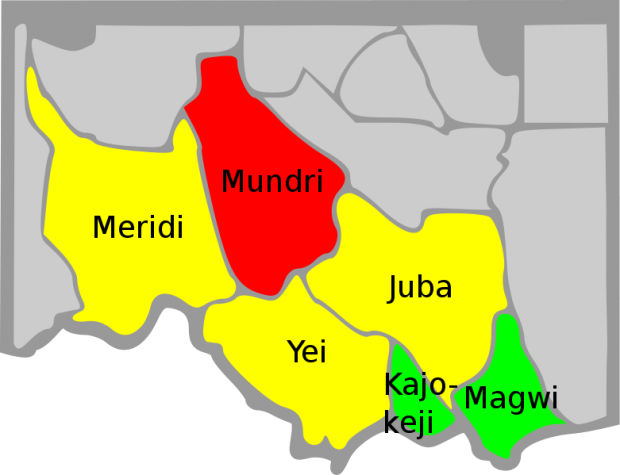[Nigeria Report] Cause of Nodding Syndrome has yet to be known
Nodding disease or nodding syndrome is a recent, little-known disease which emerged in Sudan in the 1960s. It is a fatal, mentally and physically, disabling disease that only affects children, typically between the ages of 5 and 15.
It is currently restricted to small regions in South Sudan, Tanzania, and northern Uganda. Prior to the South Sudan outbreaks and subsequent limited spread, the disease was first described in 1962 existing in secluded mountainous regions of Tanzania, although the connection between that disease and nodding syndrome was only made recently.
Diagnosis is not very advanced and is based on the telltale nodding seizures of the victims. When stunted growth and mental retardation are also present, probability of nodding syndrome is high. In the future, neurological scans may also be used in diagnosis. As there is no known cure for the disease, treatment has been directed at symptoms, and has included the use of anticonvulsants such as sodium valproate and phenobarbitol. Anti-malaria drugs have also been administered, to unknown effect.
Nodding syndrome is thought to be debilitating both physically and mentally. In 2004, Peter Spencer stated: “It is, by all reports, a progressive disorder and a fatal disorder, perhaps with duration of about three years or more.” While a few children are said to have recovered from it, many have died from the illness. Seizures can also cause children to collapse, potentially causing injury or death.
While occurrences of the disease known as “nodding syndrome” have been relatively recent, it appears that the condition was first documented in 1962 in southern Tanzania. More recently, nodding syndrome was previously most prevalent in South Sudan, where in 2003 approximately 300 cases were found in Mundri alone. By 2009, it had spread across the border to Uganda’s Kitgum district, and the Ugandan ministry of health declared that more than 2,000 children had the disease. As of the end of 2011, outbreaks were concentrated in Kitgum, Pader and Gulu. More than 1,000 cases were diagnosed in the last half of that year.
There were further outbreaks in early 2012, in South Sudan, Uganda, and Tanzania. It is currently not known what causes the disease, but it is believed to be connected to infestations of the parasitic worm Onchocerca volvulus, which is prevalent in all outbreak areas. United States Centers for Disease Control (CDC) doctors stated that Onchocerca volvulus, a nematode, is carried by the black fly and causes river blindness. In 2004, most children suffering from nodding disease lived close to the Yei River, a hotbed for river blindness, and 93.7% of nodding disease sufferers were found to harbor the parasite — a far higher percentage than in children without the disease. A link between river blindness and normal cases of epilepsy, as well as retarded growth, had been proposed previously, although the evidence for this link is inconclusive.
Of the connection between the worm and the disease, Scott Dowell, the lead investigator into the syndrome for the US Centers for Disease Control and Prevention (CDC), stated: “We know that Onchocerca volvulus is involved in some way, but it is a little puzzling because [the worm] is fairly common in areas that do not have nodding disease.” Andrea Winkler, the first author of a 2008 Tanzanian study, has said of the connection: “We could not establish any hint that Onchocerca volvulus is actually going into the brain, but what we cannot exclude is that there is an autoimmune mechanism going on.” In the most severely affected region of Uganda, infection with microfilariae in epileptic or nodding children ranged from 70% to 100%.
The CDC is investigating a possible connection with wartime chemical exposure. The team is also investigating whether a deficiency in vitamin B6 (pyridoxine) could be a cause, noting the seizures of pyridoxine-dependent epilepsy and this common deficiency in disease sufferers. Older theories include a 2002 toxicology report that postulated a connection with tainted monkey meat, as well as the eating of agricultural seeds provided by relief agencies that were covered in toxic chemicals.
In February 2012, the Uganda Ministry of Health reported “Nodding Syndrome”, in the Northern Uganda districts of Kitgum, Pader and Lamwo. The condition was first noticed in Kitgum district in 2003, and described as a progressive disease characterized by nodding of the head, mental retardation and stunted growth. The investigations revealed that the disease was a new type of epilepsy that was reported to have affected at least 3,000 children in the districts of Kitgum, Lamwo and Pader in Northern Uganda. As of February 14, it is estimated that a total to 3,094 suspected cases with 170 deaths have occurred.
Uwalaka Temple U.B Intern Reporter news@theasian.asia









































































